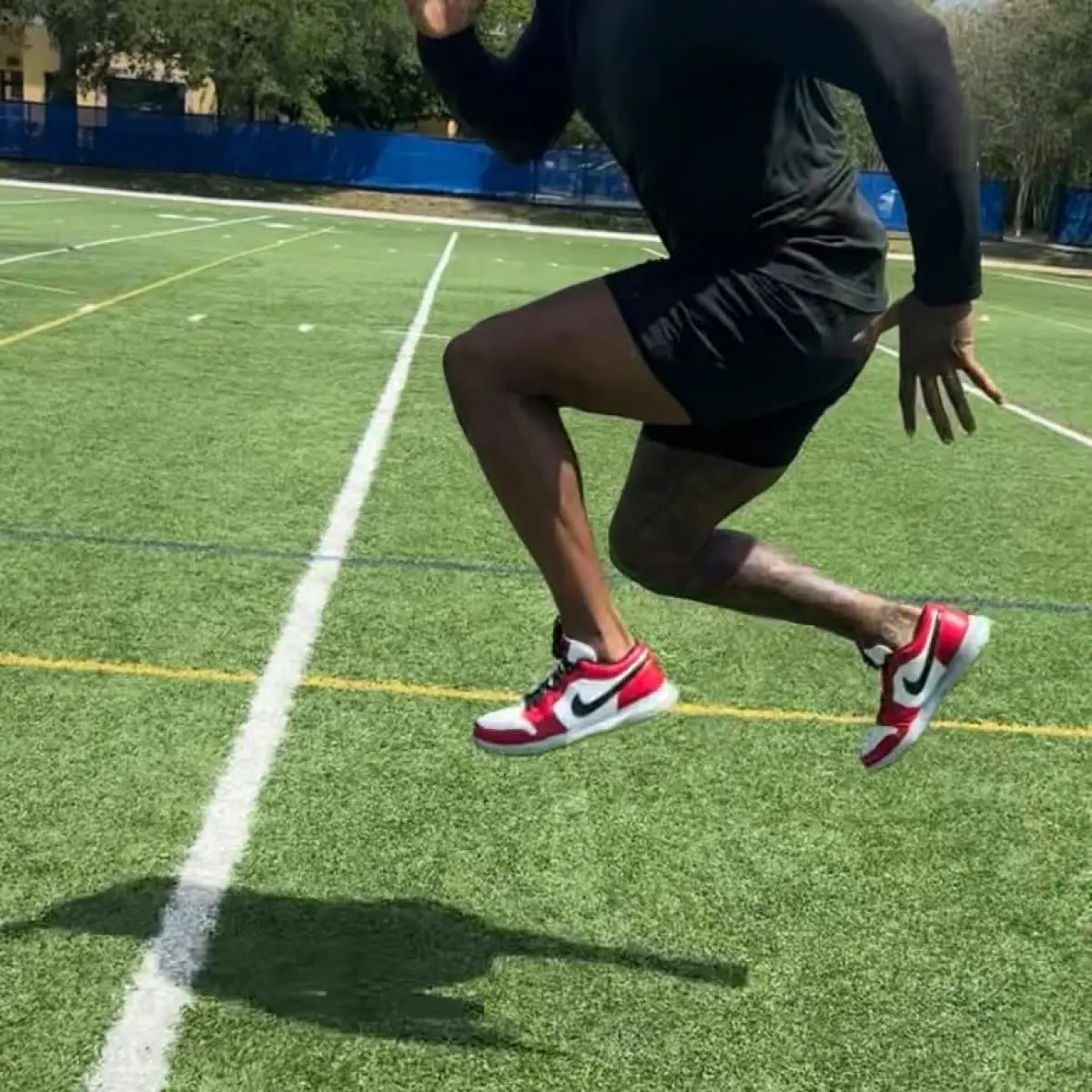NFL Offseason Training Phases: A Strategic Approach
Empowering NFL athletes with precise phases for peak performance in the offseasons on cue.

Image: Instagram
In the competitive world of professional football, every offseason is a chance for athletes to optimize their performance and prepare for the rigorous demands of the upcoming season. A recent Instagram post by Clelin Ferrell, widely recognized as one of the standout NFL players, along with his training partner @missiledreaming, has shed light on a well-structured training regimen designed specifically for NFL athletes. The post breaks down the training into three distinct phases, each focusing on a unique aspect of performance improvement.
Phase 1 Goals:
The initial phase centers around restoring range of motion (ROM) while enhancing mobility and movement patterns. Coaches and trainers often emphasize the importance of this phase because it lays the groundwork for all subsequent strength and speed training. Restoring ROM is crucial, as it not only helps in the prevention of injuries but also ensures that muscle groups are properly engaged during more intensive workouts. For NFL athletes, whose seasons are packed with high-impact plays, focusing on mobility immediately after the season—and before organized team activities like OTAs (Organized Team Activities)—helps in reducing downtime caused by injuries.
The Instagram post explains that during this phase, the primary goal is to re-establish functional movement. The emphasis on ROM and controlled mobility work allows athletes to later transition into strength-focused training without risking overuse injuries. While the clip shared by Clelin Ferrell showcases dynamic movements designed to enhance flexibility, the underlying message is clear: a solid foundation in mobility is essential for any player aiming for longevity in the league.
Phase 2 Goals:
As athletes improve their mobility, the next phase pivots towards building strength and increasing speed. Described in the post as the stage to “get strong(er)” and “get fast(er),” this phase builds upon the restored mobility by introducing resistance training and speed drills. The methodology here is systematic—first ensure the body moves well, then load it progressively to build the muscle strength needed for high-impact plays on the field.
NFL training regimens often incorporate this dual-focus as a critical step during the offseason. It is during these months that athletes work under close supervision with trainers who assess their mechanics and tailor the program based on individual needs and assessments. This phase is not only about lifting heavier weights but also about refining the speed and explosiveness required in competitive matches. In Clelin’s case, with his rich history documented on various platforms and even reported in his Wikipedia biography, this approach aligns perfectly with his known work ethic and dedication to maintaining peak physical condition.
Phase 3 Goals:
Once mobility is assured and strength is built, the final phase becomes about agility and power. The post uses the phrases “get twitchy” and “get powerful” to encapsulate the goals of Phase 3. This phase is particularly emphasized during the summer, just before training camp, when refining quickness and acute muscular power can help athletes transition smoothly into the competitive arena. It involves drills that simulate game-like scenarios requiring quick reflexes, rapid directional changes, and bursts of explosive power.
By the time the NFL preseason rolls around, the athletes who have followed this phased regimen are expected to hit the ground running. Trainers like @missiledreaming highlight that the duration of each phase should be informed by an initial assessment of the athlete’s condition—ensuring that those phases which require more focus are extended accordingly. This strategic planning and periodization of training have become a blueprint for many leading trainers working with NFL players.
Integrating The Phases For Peak Performance
This structured approach exemplified in the post is much more than just a training routine—it represents a paradigm of modern athletic conditioning where every minute of the offseason is harnessed to maximize an athlete’s performance. The post also invites questions from followers, suggesting that there is ongoing discussion about how personalization in training can lead to better long-term outcomes for athletes like Clelin Ferrell.
Clelin Ferrell’s journey, as outlined not only through his recent Instagram update but also in historical posts available on social media platforms, underscores a commitment to excellence. His adherence to a regimen that encompasses ROM restoration, strength and speed training, and finally agility and explosive power, mirrors the best practices in athletic training. His training routine, which has its echoes in previous posts where he has showcased dynamic movements and rigorous workouts, continues to inspire both fans and fellow athletes to prioritize proper conditioning.
This work plan for NFL athletes is a testament to how well-conceived training phases can lead to sustained performance throughout a grueling season. With the off-season periods being crucial for recovery and development, the insights shared by experts like @missiledreaming and seen through the lens of Clelin Ferrell’s training highlight a model that could very well become a staple in modern athletic preparation.
In conclusion, the structured three-phase approach is a prime example of how careful assessment and tailored training can optimize an NFL athlete’s performance. By aligning ROM restoration, then focusing on strength and speed, and finally honing agility and power, athletes are well-prepared to tackle the competitive season ahead. As showcased in the shared clip, there indeed is “some gold” in these training techniques—techniques that promise to keep athletes at the peak of their game well into the next season.
Read full bio of Kavita Sandesh
















